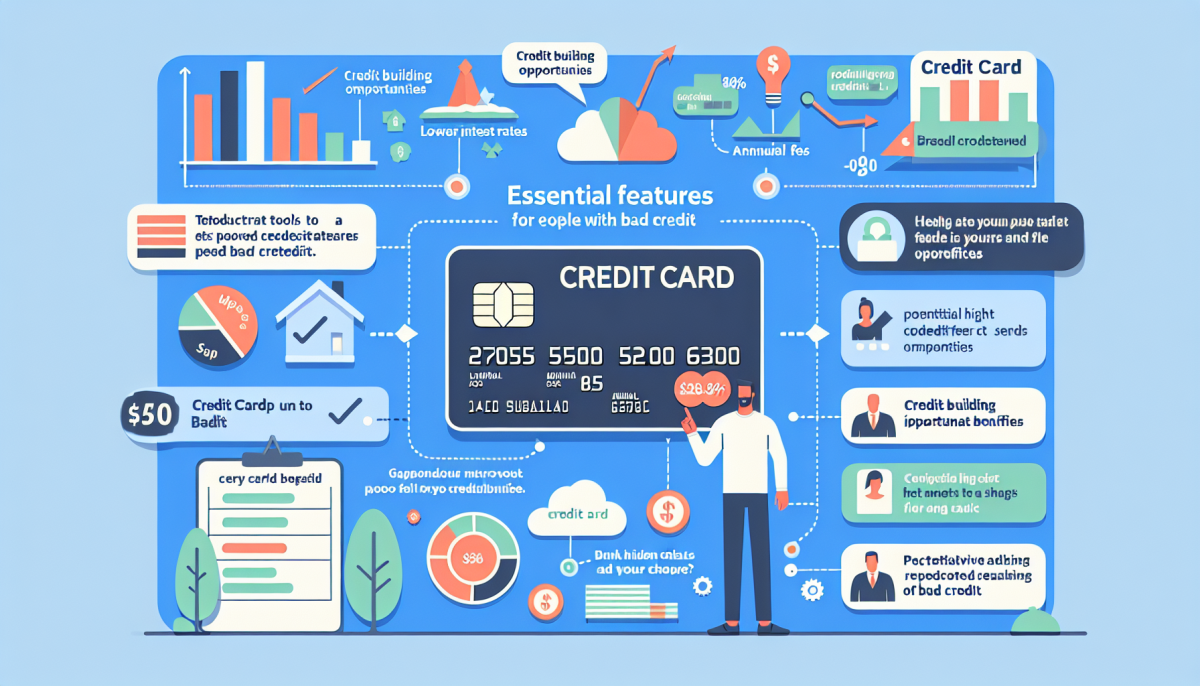Having bad credit can make it challenging to qualify for a traditional credit card. However, there are credit cards specifically designed for individuals with poor credit scores. When selecting a credit card for bad credit, it is essential to consider key features and fees associated with these cards. Understanding these aspects can help you make an informed decision and improve your financial situation.
Understanding Key Features of Credit Cards for Bad Credit
One of the key features to consider when selecting a credit card for bad credit is the credit limit. Typically, credit cards for bad credit have lower credit limits compared to traditional credit cards. This is because issuers want to mitigate their risk when lending to individuals with poor credit histories. It is crucial to choose a credit card with a credit limit that meets your needs but also allows you to manage your spending and payments effectively.
Another important feature to consider is the APR (Annual Percentage Rate) of the credit card. Credit cards for bad credit often come with higher APRs compared to traditional credit cards. This is because individuals with poor credit scores are considered higher-risk borrowers. It is essential to carefully review the APR of the credit card and understand how it will impact your finances. Look for a credit card with a lower APR to minimize the amount of interest you will have to pay on your balance.
Additionally, consider whether the credit card for bad credit offers any rewards or benefits. While most credit cards for bad credit may not come with rewards programs, some issuers may offer perks such as cashback on purchases or credit monitoring services. These rewards can help you save money or improve your credit score over time. Evaluate the rewards and benefits offered by different credit cards for bad credit to determine which one aligns best with your financial goals.
Evaluating Fees Associated with Credit Cards for Bad Credit
When selecting a credit card for bad credit, it is crucial to carefully evaluate the fees associated with the card. Common fees to look out for include annual fees, late payment fees, and foreign transaction fees. Annual fees are charges that you must pay each year to maintain your credit card account. Some credit cards for bad credit may have high annual fees, so it is important to weigh the cost of the fee against the benefits of the card.
Late payment fees are charges incurred when you do not make your minimum monthly payment on time. These fees can add up quickly and further damage your credit score. Before choosing a credit card for bad credit, make sure to understand the late payment fees and how they will impact your finances. Foreign transaction fees are charges incurred when you make purchases in a foreign currency. If you plan to use your credit card for international transactions, consider a card with lower or no foreign transaction fees to save money.
In addition to these fees, some credit cards for bad credit may also have application fees or processing fees. These fees can add to the cost of obtaining a credit card and may not be worth it in the long run. Before applying for a credit card for bad credit, carefully review the fee structure and determine if the fees are reasonable and justifiable. By understanding and evaluating the fees associated with credit cards for bad credit, you can choose a card that aligns with your financial needs and goals.
Selecting a credit card for bad credit requires careful consideration of key features and fees associated with the card. By understanding the credit limit, APR, rewards, and benefits, you can choose a card that meets your financial needs. Additionally, evaluating fees such as annual fees, late payment fees, and foreign transaction fees can help you avoid unnecessary charges and manage your finances effectively. With the right credit card for bad credit, you can work towards improving your credit score and achieving your financial goals.


